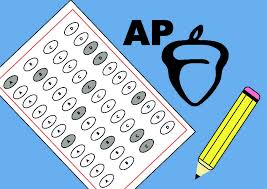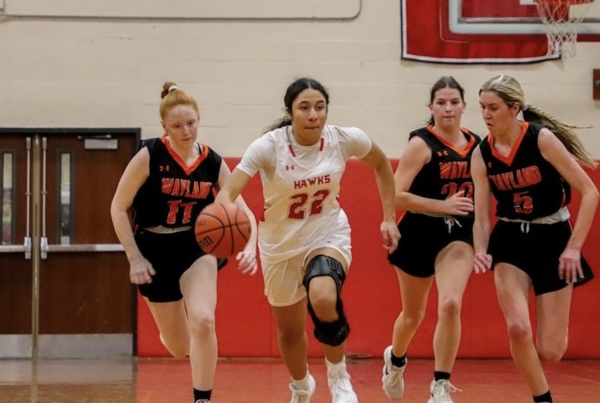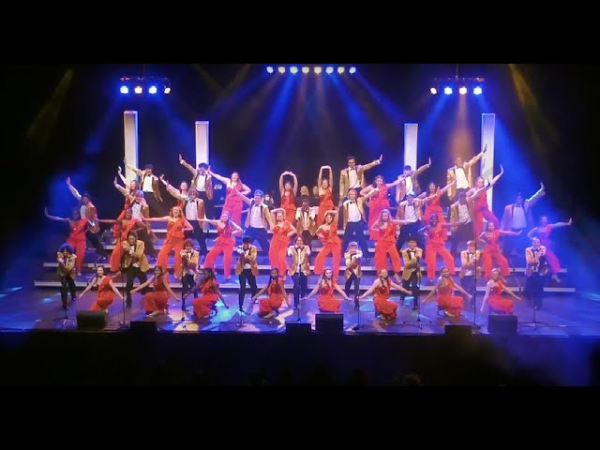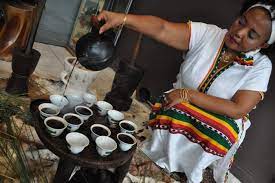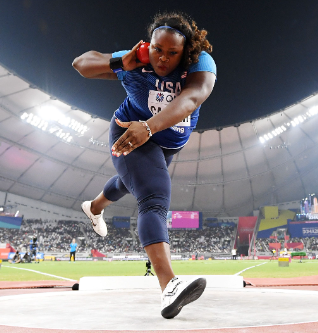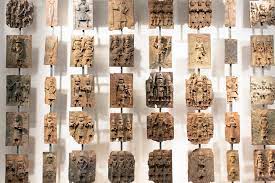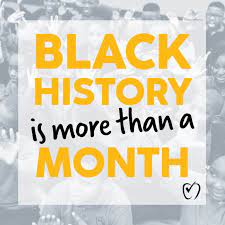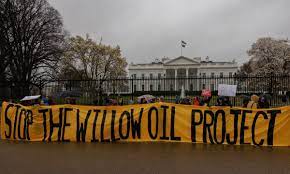MLB 2022 Season Preview

April 7, 2022
For the first time since 1995, Major League Baseball was stalled in a lockout. With the CBA expiring at the end of the 2021 season, the owner’s struck first by locking out the players on December 2, 2021. By doing this, players in the MLB couldn’t talk to coaches, use facilities, see team specialists, negotiate contracts, and much more. Not for another 99 long days would there be another deal in place. Lots of negotiations and concessions led to an eventual deal being made.
But why is this so important, and why does completing a deal without missing games matter? Before the 1994 strike by the players, Major League Baseball was at its peak in popularity. This was the time of the Mark McGwire and Sammy Sosa steroid era with lots of talent in the league. Baseball had spent decades seeing popularity increases, but all that progress came to a halt when the players went on a strike in ‘94.
In the 80s and into the 90s, baseball was America’s Game. It was the sport most Americans would watch on TV in the evening when they came home to unwind. But as the years progressed, games became more commercialized and longer, drawing fans away from the old sport and into faster and more physical games like the NBA, NFL, or NHL. Viewership in the World Series alone has dropped dramatically in just 30 years. In the 2020 World Series, baseball had the least amount of fans watching since the beginning of televised games. The peak game of viewership came in Game 6 of that World Series where the Los Angeles Dodgers clinched their first World Series since 1988, where just about 9.8 million viewers tuned in. From 1978 – 1991, nine of the 10 most watched games in MLB History were played, with an average viewership of about 50 million viewers. That is what a combination of a strike and no changes to the game does to the viewers: it makes them want to leave. This is why getting a deal done with valid changes in play was so important before the deadline of game cancellations set by MLB Commissioner Rob Manfred of February 28th, 2022.
Now let’s dive into what the deal was with the MLB and the Major League Baseball Players Association, otherwise known as the MLBPA. The MLBPA wanted to reward their young stars of the game with a bonus pool of money as well as giving the older players a higher minimum salary. The owners on the other hand wanted to keep monetary numbers similar to the past and opt for a 14 team playoff, completely different from the traditional 10 team playoff that the MLB currently has. The numbers of the central ideas were extremely radical on both sides, the players wanted 10 times what the owners wanted for the bonus pool, and the owners wanted an extremely low Competitive Balance Tax with virtually no increase from previous years.
The Competitive Balance Tax was one of the main points of the negotiations with it being the “salary cap” for the MLB. The tax would be enforced for teams that would spend more money than the maximum threshold ($210 million). For every dollar that was spent over, it would be taxed at a ridiculous rate. It is a way to keep the big well-funded clubs, such as the Yankees, Mets, Red Sox, Cubs, and Dodgers, from spending incomprehensible amounts of money each year and to keep the smaller market teams competitive. A great example of this would be the 2014 Kansas City Royals. Being in a small market, Kansas City couldn’t re-sign all these big money superstar players. Instead, they built up from the bottom. A key group of guys came up through the farm system and made it all the way to the majors where they performed at the highest level and won the World Series. In the years that followed players like Eric Hosmer seeked big contracts and eventually left the team for big name teams.
But finally on March 10, 2022, an agreement was reached between the two sides. This came the day after the MLB said it would also cancel a second week of games. Not to bore you with the details, but some of the other rule changes and monetary incentives include: a new expanded 12 team playoff, a draft lottery for the three worst teams, a universal DH (a rule that had allowed pitchers to hit in the National League), and a possible International Players Draft coming into play down the road, different from free agency signing for international players like it had been for as long as the league existed. The vote passed unanimously amongst the owners and passed 26-12 for the majority vote with the MLBPA. The season is set to begin on April 7, 2022, with the cancellation of games being made up in doubleheaders spread across the season.
Since the whole off-season was a lockout, players who became free agents after the 2021 season had to sign with teams. This started the free agency frenzy. Trades and signings littered the league as soon as the lockout ended, the first being Drew VerHagen signing a two-year deal with the St. Louis Cardinals.
Here are some of the biggest moves of this off-season:
Signings:
- Max Scherzer signs a 3 year $130 million deal with the New York Mets
- Carlos Correa signs a 3 year $105.3 million deal with the Minnesota Twins
- Corey Seager signs a 10 year $325 million deal with the Texas Rangers
- Marcus Semien signs a 7 year $175 million deal with the Texas Rangers
- Freddie Freeman signs a 6 year $162 million deal with the Los Angeles Dodgers
- Kris Bryant signs a 7 year $182 million deal with the Colorado Rockies
- Trevor Story signs a 6 year $140 million deal with Boston Red Sox
- Justin Verlander re-signs a 2 year $50 million deal with Houston Astros
- Robbie Ray signs a 5 year $115 million deal with the Seattle Mariners
- Kevin Gausman signs a 5 year $110 million deal with the Toronto Blue Jays
Trades:
- Texas Rangers trade SS Isaiah Kiner-Falefa and P Ronny Henriquez to the Minnesota Twins in return for C Mitch Garver
- Oakland Athletics trade All-Star P Chris Bassitt to the New York Mets for two minor league pitchers
- Cincinnati Reds trade P Sonny Gray and minor league pitcher to Minnesota Twins for prospect Chase Petty
- Minnesota Twins trade former MVP 3B Josh Donaldson and newly acquired SS Isaiah Kiner-Falefa to the New York Yankees for C Gary Sanchez and 3B Gio Urshela
- Atlanta Braves land superstar 1B Matt Olsen from the Oakland Athletics in return for 4 prospects from the Braves farm system.
- Seattle Mariners trade for All Star OF Jesse Winker and 3B Eugenio Suarez from the Cincinnati Reds in return for multiple prospects
- Oakland Athletics trade All Star 3B Matt Chapman to the Toronto Blue Jays for multiple prospects
- San Diego Padres trade for 1B Luke Voit from the Yankees and P Sean Manea from the Oakland Athletics for prospects
- Los Angeles Dodgers acquire future Hall of Fame Closing Pitcher Craig Kimbrel from the Chicago White Sox for OF AJ Pollock
- Tampa Bay Rays trade OF/DH Austin Meadows to the Detroit Tigers for IF Isaac Paredes and a pick
My Takeaways:
From a lockout to free agency frenzy, I have never seen anything like this before in my life. This off-season has been one to remember and has been full of emotions. Through it all we have seen some teams who have clearly decided their path for the future. Starting with the sellers, (teams heading for a rebuild), we have the Oakland Athletics.
Oakland has been a team in wild card contention for years now, but they decided to blow it all up this off-season. It started with pitchers Jake Diekmann leaving for Boston, Chris Bassitt being traded as well as Sean Manea. Not to mention all-star 3B Matt Chapman being dealt along with 1B Matt Olsen. The roster has been wiped out and replaced with youth and prospects for the future.
Another seller has been the Cincinnati Reds. Cincinnati has come off the past few years of being a mediocre team. With all-star OF Nick Castellanos leaving for the Phillies, OF Jesse Winker and 3B Eugenio Suarez being dealt to Seattle, and P Sonny Gray getting traded to Minnesota, the signs point to another Cincinnati rebuild.
Some teams that really made a push this off-season are the Rangers, Tigers, Twins, Toronto, and Seattle. All of these teams have struggled with being a contending team for decades now, but we finally see some improvement to these organizations. But one of these teams stands higher than the rest, the Texas Rangers.
The Rangers brought in free agents SS Corey Seager and 2B Marcus Semien, two of the highest ranked free agents in the class. Seager had spent the last few years with the Dodgers where he had made a name for himself as being one of the best SS in the league. Semien had spent time on the Athletics before signing a one-year deal with the Blue Jays last season. Semien had an insane 2021 season being the first 2nd Baseman to hit more than 40 homeruns ever. It helped him cash in this off-season as he signed a massive deal with the team. The team spent over a half a billion dollars just this year alone. Along with drafting superstar pitcher Jack Leiter last year with the 2nd overall pick, they signed longtime Colorado Rockies P Jon Gray to boost the rotation. The Rangers also traded for C Mitch Garver from the Twins to bolster that position. This once subaverage franchise has now put itself in a position to contend again. Maybe not this year but in a few years when guys like Adolis Garcia and Jack Leiter develop and become stars in the league, watch out for the Rangers.
My Predictions:
This off-season has been so crazy, and add that with NFL free agency and March Madness, March has been a great month for the avid sports fan such as myself. With that being said, many changes occurred for all these teams and has made for a really interesting 2022 season. Before making my predictions, I want to take a chance to give my award winners for the leagues:
AL /NL
MVP: Rafael Devers (BOS) Juan Soto (WSH)
ROY: Julio Rodriguez (SEA) O’Neil Cruz (PIT)
Cy Young: Gerrit Cole (NYY) Walker Buehler (LAD)
MOTY: Charlie Montoya (TOR) Dave Roberts (LAD)
Standings Predictions
American League:
East: Central: West:
- Toronto Blue Jays (103-59)* 1. Chicago White Sox (99-63) 1. Los Angeles Angels (91-71)
- Boston Red Sox (97-65) 2. Minnesota Twins (87-75) 2. Seattle Mariners (90-72)
- Tampa Bay Rays (96-66) 3. Detroit Tigers (84-78) 3. Houston Astros (88-74)
- New York Yankees (89-73) 4. Cleveland Guardians (76-86) 4. Texas Rangers (82-80)
- Baltimore Orioles (52-110) 5. Kansas City Royals (68-94) 5. Oakland Athletics (57-105)
National League:
East: Central: West:
- Atlanta Braves (97-65) 1. Milwaukee Brewers (102-60) 1. Los Angeles Dodgers (109-53)*
- New York Mets (91-71) 2. St. Louis Cardinals (93-69) 2. San Diego Padres (99-63)
- Philadelphia Phillies (86-76) 3. Chicago Cubs (75-87) 3. San Francisco Giants (80-82)
- Washington Nationals (70-92) 4. Cincinnati Reds (68-94) 4. Colorado Rockies (71-91)
- Miami Marlins (63-99) 5. Pittsburgh Pirates (54-108) 5. Arizona Diamondbacks (56-106)
Bold indicates Division Winner
* indicates best record in that league
Italics means Wildcard team
